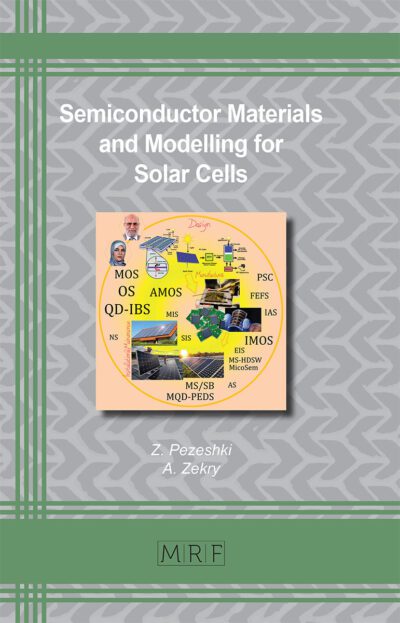Charge Density and Structural Characterization of Thermoelectric Materials
by R. Saravanan
Materials Research Foundations Vol. 1
184 pages, full color print, 2016
Print ISBN 978-1-945291-00-5
eBook ISBN 978-1-945291-01-2
DOI: https://dx.doi.org/10.21741/9781945291012
Thermoelectric materials permit the direct conversion of temperature differences into electric energy, and vice versa. They are therefore of highest technological interest in applications such as solid state coolers, waste heat recovery, sensors and detectors, and power generators including remote power generation.
Thermoelectric materials are often called “environmentally green”, and for good reasons. Not only can they help generate electrical energy from waste gases as they are generated in such processes as home heating, industrial fabrication and automotive motion. In cooling applications they eliminate the use of chemical refrigerant gases. Moreover, as thermoelectric conversion devices have no moving parts, they operate silently and have a very long life expectancy. The only current drawback of these devices is their poor efficiency.
Scientists all over the world are therefore studying the structural, thermoelectric, charge-density and magnetic properties of the most promising types of these materials at the atomic and electronic level. In addition to providing an introduction to the field, the main objective of this book is to present the results of the growth and structural characterization of thermoelectric materials that are of high current interest; including Mg2Si, PbTe, Bi1-xSbx, Bi2Te3, Sb2Te3, Sn1-xGexTe, Te and InSb.
Keywords
Materials Science, Thermoelectric Materials, Thermoelectric Mechanism, Charge Density, Structural Characterization, Magnesium silicide, Lead telluride, Bismuth doped with antimony, Bismuth telluride, Antimony telluride, Tin telluride doped with germanium, Indium Antimonide, Pair Distribution Function, Maximum Entropy Method, Rietveld Method
Table of Contents
Preface v
Chapter I Thermoelectrics: An Introduction 1
Chapter II Results and Discussion Based on Rietveld Refinements 52
Chapter III Results and Discussion on Charge Densities Derived from the Maximum Entropy Method (MEM) 93
Chapter IV Results and Discussion Based on the Pair Distribution Function (PDF) 145
Chapter V Conclusion 162
Keywords 169
About the author 171
ProtoView by Ringgold Clean Data
Saravanan presents the results of the growth and structural characterization of a number of thermoelectric materials to determine their suitability for use in thermoelectric devices such as solid state coolers, power generators, sensors, and detectors. The materials are Mg2Si, PbTe, Bi1-xSbx, Bi2Te3, Sb2Te3, Sn1-xGexTe, and InSb. He covers thermoelectric basics, results and discussion based on Rietveld refinements, results and discussion on charge densities derived from the maximum entropy method, and results and discussion based on the pair distribution function. Annotation ©2017 Ringgold Inc. Portland, OR (protoview.com)
Ringgold Keywords
Thermoelectric materials, Charge density, Structural characteristics, Thermoelectric devices, Material science

















